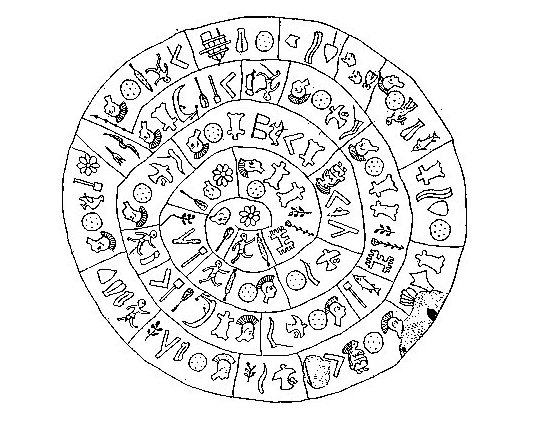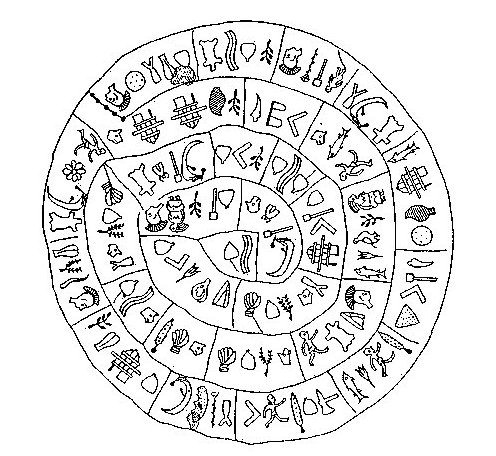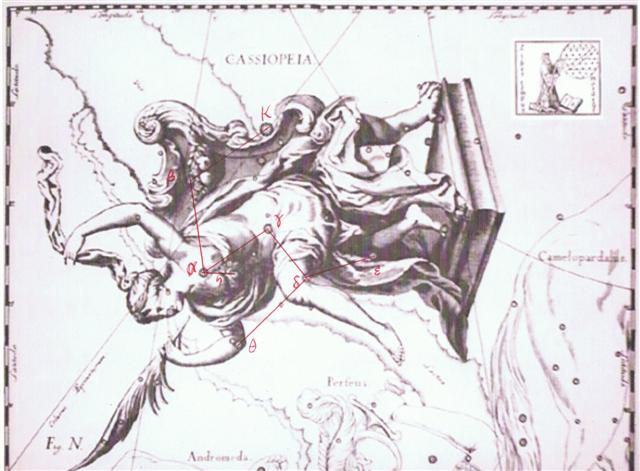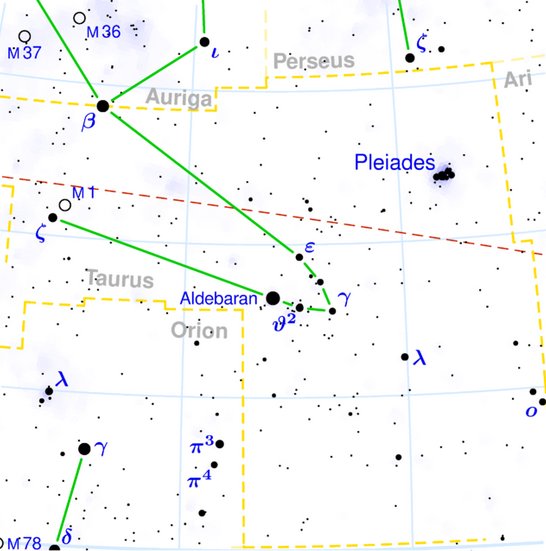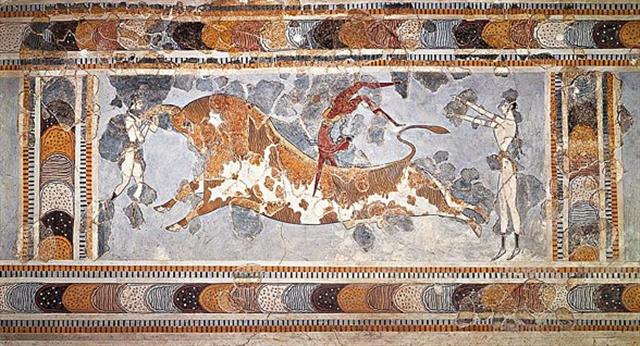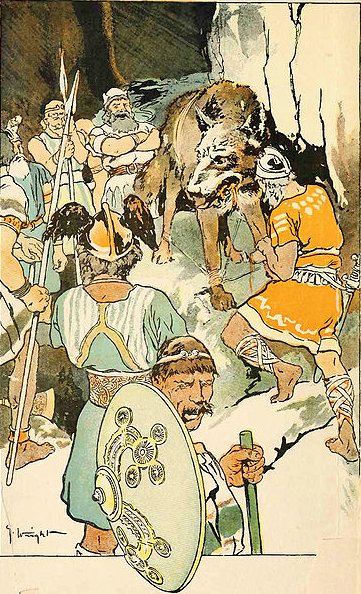16. We can now guess the design on the Phaistos disc was created to show this phenomenon. On the high (summer daylight) side there was incised a Sun Flower at the top, from where spirals were flowing out (growing according to the rule of the number of Φ-bonacci, φ):
161 (→ φ) + 123 = 284 (→ *284, December 30). And at the opposite (reverse) side of the disc the central place seems to refer to the Breast of Cassiopeia (*8), which at the same time easily could be found in the night sky by reversing the nakshatra Full Moon method:
The G text is evidently beginning with the Sun at the Eye of the Bull (Ain, ε Tauri):
And the 'butting' northern horn of the Bull (El-nath, β Tauri) was 'pointed out' in the text by a little dot *15 right ascension days later, marking the place for the 'salto mortale':
There were 6 days from the Roman 'February 23 (Terminalia) - cfr Gb3-12 - to the beginning of the new year: ... The leap day was introduced as part of the Julian reform. The day following the Terminalia (February 23) was doubled, forming the 'bis sextum - literally 'double sixth', since February 24 was 'the sixth day before the Kalends of March' using Roman inclusive counting (March 1 was the 'first day'). Although exceptions exist, the first day of the bis sextum (February 24) was usually regarded as the intercalated or 'bissextile' day since the third century. February 29 came to be regarded as the leap day when the Roman system of numbering days was replaced by sequential numbering in the late Middle Ages ... And when king Hotu A Matua was intent on leaving his old homeland and sail to Easter Island it was necessary to first bring onboard 'sleeping mats' (moega), which took 6 days.
... Matua [A Taana] said to Hotu [A Matua], 'Take along the Hanau Eepe and let them work the land!' Hotu called out to Heke: 'Go and bring the 500 prisoners on board the canoe!' He took all of them along, led them on board the canoe, and left them there. For six days (po ono), mats (moenga) were taken on board the canoe (i.e., the loading of the canoe took six days) ... [E:73-74] A next to invisible little dot adorns the front end also where the Sun was reaching the Heavenly Gate:
From the Crab Nebula (M1) to the 'Crab' constellation (Cancer) as represented by its α star Acubens we can count *135 - *83 = *52 right ascension days:
From M1 to the Exhalation of Piled-up Corpses (ε Cancri at M44, the Beehive Cluster) there were 2 * 73 - 9 * 11 days (→ 3 * 91 - 91 * 1 = 2 * 91 = 182.
|
|||||||||||||||||||||||||||||||||||||||||||||||||||||||||||||||||||||||||||||||||||||||||||||||||||||||||||||||||||||||||||||||||||||||||||||

